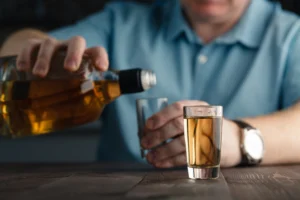Opioid addiction, whether prescription or manufactured opioids, touches the lives of millions of Americans each year. The impacts of opioid use and abuse are not restricted to any one community, state, or demographic. An opioid addict can be a friend, neighbor, community figure, or the local corner store owner. An opioid is a broad term used to classify a variety of prescription and illicit drugs, including prescription painkillers and “street drugs” such as heroin. Without addiction treatment, many who struggle with a heroin addiction succumb to overdose due to its powerful effects.
A Deep Dive Into Heroin Addiction
Heroin is an opioid drug manufactured from morphine, a naturally occurring substance taken from the seed pod of the opium poppy plants grown in Asia, Mexico, and Columbia. Depending on how it is manufactured, heroin may be a white or brown powder or a black sticky substance with the consistency of tar. The latter of these is also referred to as black tar heroin. Heroin is also known by several other names, including hell dust and smack. Unlike several other opioids, there are multiple ways heroin can be introduced into the body. It can be snorted, smoked, inhaled through the nose, or injected. Some people also mix heroin with crack cocaine to create a more potent drug. This practice is known as speedballing.
Heroin is a highly addictive drug. The effects on the body are very rapid, and it does not take long for someone who uses heroin regularly to develop a tolerance for its effects. Once someone develops a tolerance, they require larger or more frequent doses of heroin to achieve desired results. In recent years the rate of heroin use and overdose has increased dramatically. Unfortunately, the rate of those seeking treatment to help conquer heroin addiction has not increased as rapidly.
In 2019, nearly 15,000 people lost their lives to heroin overdose. It is believed this is partially due to efforts across the nation aimed at reducing the number of opioid prescriptions provided to patients by the medical community. Because prescription pain medicines such as Oxycontin and Vicodin have similar effects to heroin, research suggests that prescription painkillers are often gateway drugs to heroin. Surveys conducted within the last few years show a percentage of those who misused prescription opioids often switched to heroin.
Why You Should Turn to Professionals for Heroin Addiction Help
If you are addicted to heroin and experience the physical and psychological symptoms of dependence on the drug, you will likely experience withdrawal symptoms when you reduce or try to stop using. In many cases, these withdrawal symptoms are often severe and overwhelming. In the most severe cases, withdrawal symptoms from heroin (and other opioids) could include severe and life-threatening withdrawal symptoms. These may consist of delirium tremens (DTs), abnormal heart rate, abnormal respiratory rates, and seizures. Depending on the duration and severity of your addiction, withdrawal symptoms can occur in as few as six hours after your last dose. For many addicts who try to quit heroin without professional help, relapse occurs once withdrawal symptoms begin. They are often too powerful to overcome without the support found in a medically assisted detox program like Cal Recovery.
If you are ready to get clean from heroin, it is highly recommended you do so in a medically supervised detox setting. While detoxing, highly trained staff will continually monitor your physical, emotional health to make detox more manageable and ensure your safety throughout the process. If you, a friend, or a loved one struggles with heroin addiction, don’t wait to seek treatment. Chronic heroin addiction can result in detrimental physical and psychological effects. Ongoing regular use often makes it difficult to admit that you have an addiction. Let the team at Cal Recovery help you begin your journey to freedom from heroin addiction today.








